(NLDO) - A dragon-like creature found as a fossil in Yunnan, China belongs to the "terrible head reptile" lineage.
Paleontologists working at the Guanling Formation in Waina Village, Yunnan Province, China, found the fossilized skeleton of a creature with a long, winding tail, representing a bizarre body with an even longer neck.
Without its central reptilian body, the monster would resemble a dragon from Chinese mythology, frolicking in the Triassic superocean Tethys.
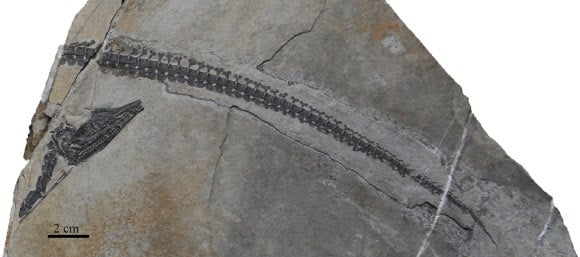
"Dragon fossil" found in Yunnan - China - Photo: Vertebrata PalAsiatica
A research team led by Dr. Wei Wang from the Institute of Vertebrate Paleontology of the Chinese Academy of Sciences identified it as a new species, belonging to a completely new genus in the Dinocephalosaurus monster lineage.
It was named Austronaga minuta, a marine reptile that lived about 244 million years ago.
The Latin name of the lineage to which the monster belonged - Dinocephalosaurus - means "terrible-headed reptile", which somewhat describes the level of fear that creatures of this type had.
They have a head with dangerous predatory teeth, mounted on a very long neck that can be twice as long as the rest of the body, and a very long tail.
But essentially, this species and other "terrible-headed reptiles" were still members of the sauropod dinosaur group of the ancient reptile class Archosauromorpha.
This ancient reptile is the sister species of Dinocephalosaurus orientalis, which also lived during the Triassic period and has been found in China before.
The fossil monster in Yunnan is a small species in its lineage, according to a paper published in the scientific journal Vertebrata PalAsiatica .
But that doesn't mean it wasn't dangerous compared to its contemporaries, because early Triassic dinosaurs were all very small.
The fossil found included a nearly complete tail with 60 vertebrae indicating flexible movement, as well as an entire skull and part of the neck.
That was enough for researchers to identify it as a Dinocephalosaurus, a group of ancient monsters often likened to sea dragons by Chinese scientists.
It's also possible that it wasn't fully aquatic but was an amphibian that spent much of its time in water, something scientists will need to learn more about by searching for more similar specimens.
Source: https://nld.com.vn/hoa-thach-rong-xuat-hien-o-trung-quoc-196250220094449853.htm


![[Photo] National Assembly Chairman works with leaders of Can Tho city, Hau Giang and Soc Trang provinces](https://vphoto.vietnam.vn/thumb/1200x675/vietnam/resource/IMAGE/2025/5/11/c40b0aead4bd43c8ba1f48d2de40720e)
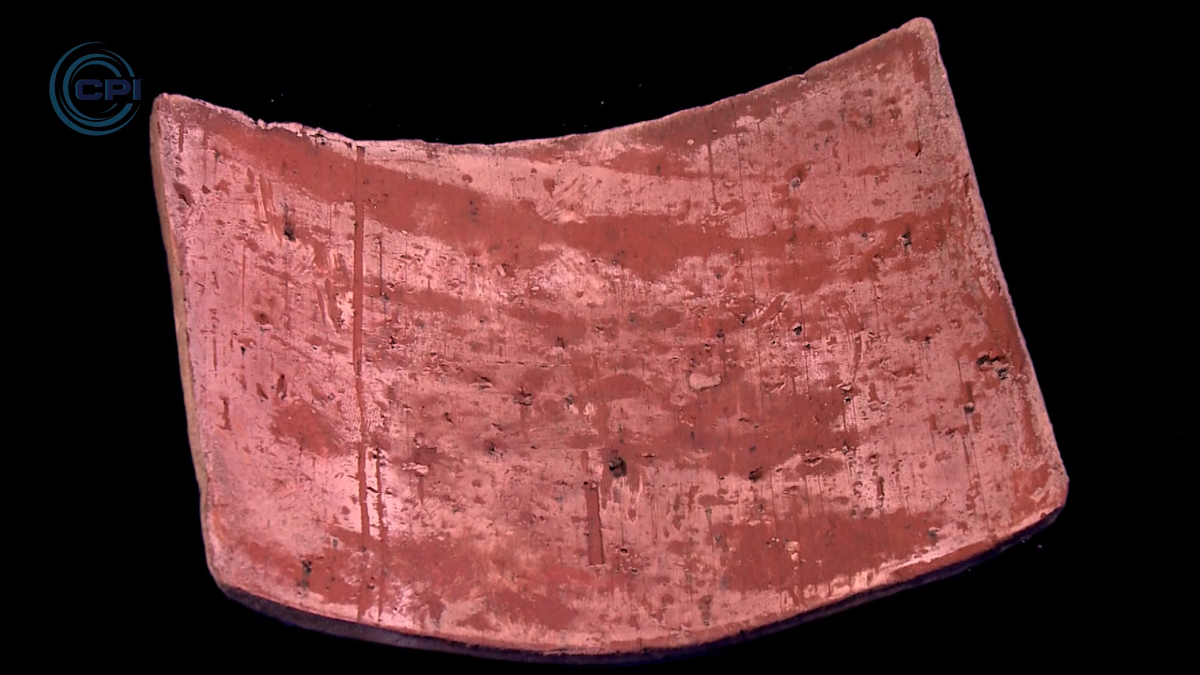

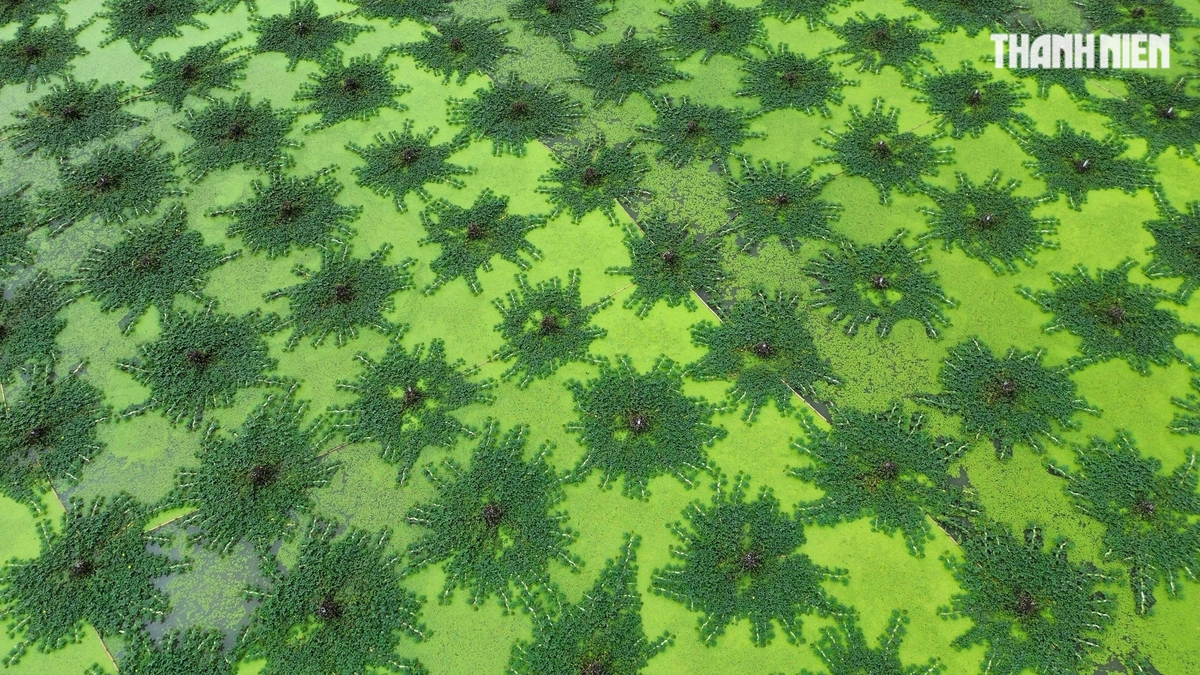
![[Photo] The moment Harry Kane lifted the Bundesliga trophy for the first time](https://vphoto.vietnam.vn/thumb/1200x675/vietnam/resource/IMAGE/2025/5/11/68e4a433c079457b9e84dd4b9fa694fe)
![[Photo] Prime Minister Pham Minh Chinh chairs the fourth meeting of the Steering Committee for Eliminating Temporary and Dilapidated Houses](https://vphoto.vietnam.vn/thumb/1200x675/vietnam/resource/IMAGE/2025/5/11/e64c18fd03984747ba213053c9bf5c5a)



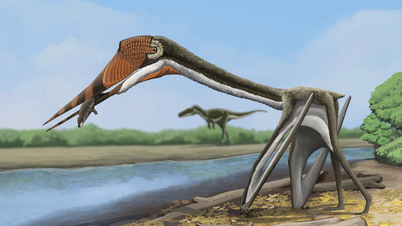


![[Video] Bringing environmental technology from the lab to life](https://vphoto.vietnam.vn/thumb/402x226/vietnam/resource/IMAGE/2025/5/11/57d930abeb6d4bfb93659e2cb6e22caf)
![[Video] Product risk classification: Solution to reform quality management, reduce burden for businesses](https://vphoto.vietnam.vn/thumb/402x226/vietnam/resource/IMAGE/2025/5/11/cbcd6b50805549a5bbb9e8e6354eda70)

![[Video] Domain name “.vn” - National symbol in cyberspace](https://vphoto.vietnam.vn/thumb/402x226/vietnam/resource/IMAGE/2025/5/11/ff459b2b640347a5948e3424e5c256d0)

















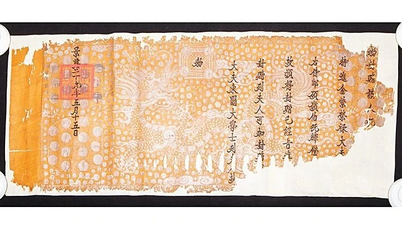
































































Comment (0)